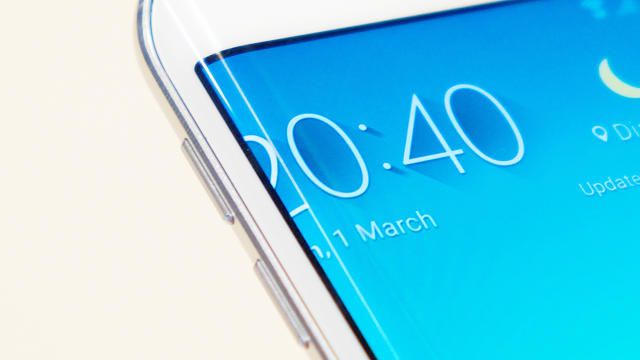It’s time for smartphones to evolve again. To think that we’re going to keep buying flat slabs of soulless glass just doesn’t make sense.
The smartphone market in the U.S. has already stopped growing, and it’s starting to look like the worldwide market has peaked as well.
Why? People have lost their sense of excitement about smartphones. Every new one announced looks and acts like the last one, and they just aren’t that interesting anymore.
The phones we already own have large enough screens. They take photos that are good enough to keep us happy for some time. That is, unless some phone maker can really start to shake things up.
I’m not talking about increasing resolution or improved processor performance or marginally better battery life. I’m talking “knock my socks off, holy crap, I didn’t think that was possible” kind of innovation.
The problem is that kind of vision and and technical advancement aren’t easy to come by. There are, however, some possibilities out there—as well as fresh concepts around much older ideas—that could stir the smartphone innovation pot.

Foldable Screens
For instance, foldable (not just bendable) screens are starting to make their way out of the R&D labs and into pilot manufacturing. As a longtime analyst of display technologies, I’ve seen prototypes of bendable and foldable displays at trade shows for more than 10 years.
It turns out manufacturing these kinds of screens in large quantities with consistent quality is extremely hard to do, which explains why we haven’t seen them in the marketplace. Like batteries, advancements in modern displays require new work in material science—in other words, fancy chemistry. And chemistry doesn’t advance at a Moore’s Law-type pace. It’s a difficult, tedious process where improvements occur slowly.
For foldable displays, companies must wait on improvements in the materials used to make OLED (organic light-emitting diode) displays, as well as on replacements for ITO (Indium Tin Oxide)—a critical element used in most pixel-based displays, and one that isn’t fold-friendly.
Despite the challenges, both Samsung and LG are rumored to be close to mass production of screens that can bend inwards. (Bending outwards presents a different set of engineering challenges that are still being worked out.)
Samsung’s rumored Galaxy X is the odds-on favorite to be the first mass-produced foldable smartphone. Reports out of Korea say that phone will be released in 2017. The device is said to fold in half, wallet-style, which makes it more compact.
We might also soon see devices that are about the size of today’s smartphones, but unfold into something that’s close to the size of a tablet. Now that, I believe, would catch people’s attention.

Forward To The Past?
And new innovations needn’t all be digital. It might be analog. After all, tech design, like fashion, often revisits ideas from the past and puts new twists on ideas to make them more appropriate for the current time. The resurgence in vinyl records and analog synthesizers (with all those beautiful knobs) proves that analog is cool again.
Analog technologies bring back a sense of physical interaction with devices and media. There’s something about that sensory experience that many people find compelling.
But on smartphones? Maybe. Before you say physical knobs or sliders sound crazy, remember that Apple put a large physical knob, the Digital Crown, on the Apple Watch.
Other examples exist. Philips just introduced a new mobile dictation device called SpeechAir that looks like a smartphone with physical controls.
Imagine having a programmable knob on your phone that could do things like zoom into photos, scroll through lists, and enable faster, more compelling gaming. It would be great to see some gutsy tech company pull off a clever new analog control for a new smartphone. At this point, what do smartphone vendors have to lose?
Bob O’Donnell is the president and chief analyst of TECHnalysis Research, LLC, a market research firm that provides strategic consulting and market research services to the technology industry and professional financial community. You can follow him on Twitter @bobodtech.
Fast Company , Read Full Story
(19)